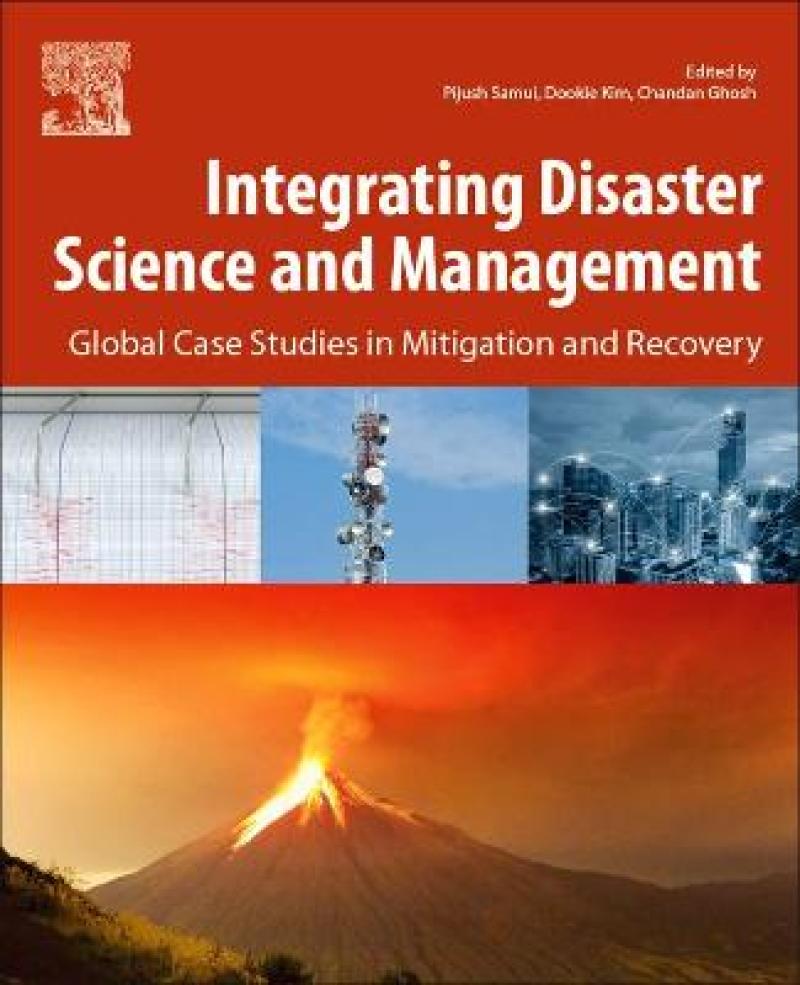Integrated Disaster Science and Management: Global Case Studies in Mitigation and Recovery bridges the gap between scientific research on natural disasters and the practice of disaster management. It examines natural hazards, including earthquakes, landslides and tsunamis, and uses integrated disaster management techniques, quantitative methods and big data analytics to create early warning models to mitigate impacts of these hazards and reduce the risk of disaster. It also looks at mitigation as part of the recovery process after a disaster, as in the case of the Nepal earthquake.
Edited by global experts in disaster management and engineering, the book offers case studies that focus on the critical phases of disaster management.
Les mer
I. Assessment and Mitigation 1. A Risk Index for Mitigating Earthquake Damage in Urban Structures 2. Importance of Geological Sutdies in Earthquake Hazard Assessment 3. Assessment of Soil Liquefaction Based on Capacity Energy Concept and Back-Propagation Neural Networks 4. Recent Earthquakes and Volcanic Activities in Kyushu Island, Japan 5. Winter Storms 6. Spatial Association Between Forest Fires Incidence and Socioeconomic Vulnerability in Portugal, at Municipal Level 7. Landslide Risk Assessment in Parts of the Darjeeling Himalayas, India 8. Forest and Land Fires in Indonesia: Assessment and Mitigation 9. Lessons from Tsunami Recovery Towards Guidelines of Housing Provision in Malaysia 10. Drought Prediction with Standardized Precipitation and Evapotranspiration Index and Support Vector Regression Models
II. Recovery and Management 11. Earthquake Risk Reduction Efforts in Nepal 12. Urban Flood Management in Coastal Regions Using Numerical Simulation and Geographic Information System 13. Probabilistic Analysis Applied to Rock Slope Stability: A Case Study from Northeast Turkey 14. Civic Fire Control System for Historic District in Kiyomizu, Kyoto—Development Projects and Its Techniques for "Environmental Water Supply System (EWSS) for Disaster Prevention" to Protect Traditional Wooden Cultural Heritage Zones from Postearthquake Fire 15. Systematic Engineering Approaches for Ensuring Safe Roads
III. Analysis and Resilience 16. Big Data Analytics and Social Media in Disaster Management 17. Risk Assessment and Reduction Measures in Landslide and Flash Flood-Prone Areas: A Case of Southern Thailand (Nakhon Si Thammarat Province) 18. Advancements in Understanding the Radon Signal in Volcanic Areas: A Laboratory Approach Based on Rock Physicochemical Changes 19. GIS Based Macrolevel Landslide Hazard Zonation, Using Newmark's Methodology 20. What Behaviors We Think We Do When a Disaster Strikes: Misconceptions and Realities of Human Disaster Behavior 21. A Quantitative Study of Social Cpaital in the Tertiary Sector of Kobe—Has Social Capital promoted Economic Reconstruction Since the Great Hanshin Awaji Earthquake? 22. Resilience and Vulnerability: Older Adults and the Brisbane Floods 23. Postdisaster Relief Distribution Network Design Under Disruption Risk: A Tour Covering Location-Routing Approach 24. Climate Change and Typhoons in the Philippines: Extreme Weather Events in the Anthropocene 25. The Role of Disaster Medicine in Disaster Management and Preparedness 26. Earthquake-Triggered Landslide Modeling and Deformation Analysis Related to 2005 Kashmir Earthquake Using Satellite Imagery 27. Spatiotemporal Variability of Soil Moisture and Drought Estimation Using a Distributed Hydrological Model
Les mer
A practical reference that bridges the gap between scientific research on natural disasters and the practice of disaster management
Identifies advanced techniques and models based on natural disaster science for forecasting disasters and analyzing risk
Offers a holistic approach to the problem of disaster management, including preparation, recovery, and resilience
Includes coverage of social, economic, and environmental impacts on disasters
Les mer
Produktdetaljer
ISBN
9780128120569
Publisert
2018-05-09
Utgiver
Vendor
Elsevier Science Publishing Co Inc
Vekt
1290 gr
Høyde
276 mm
Bredde
216 mm
Aldersnivå
P, 06
Språk
Product language
Engelsk
Format
Product format
Heftet
Antall sider
486
